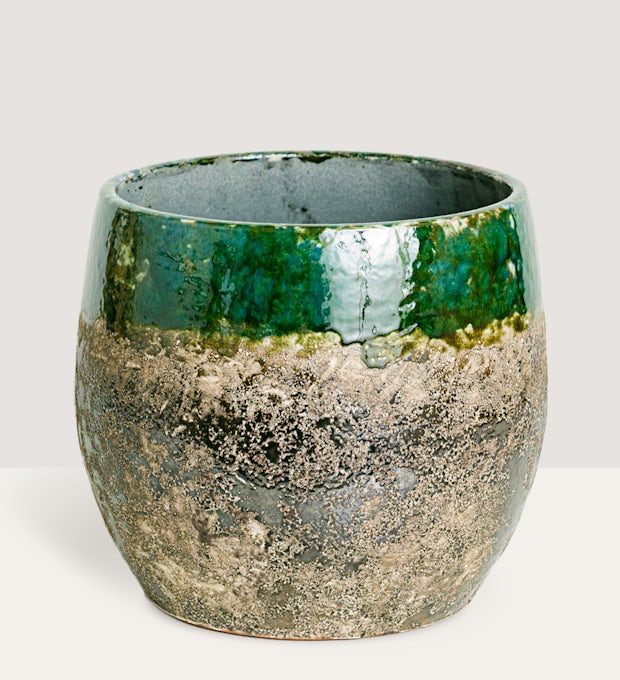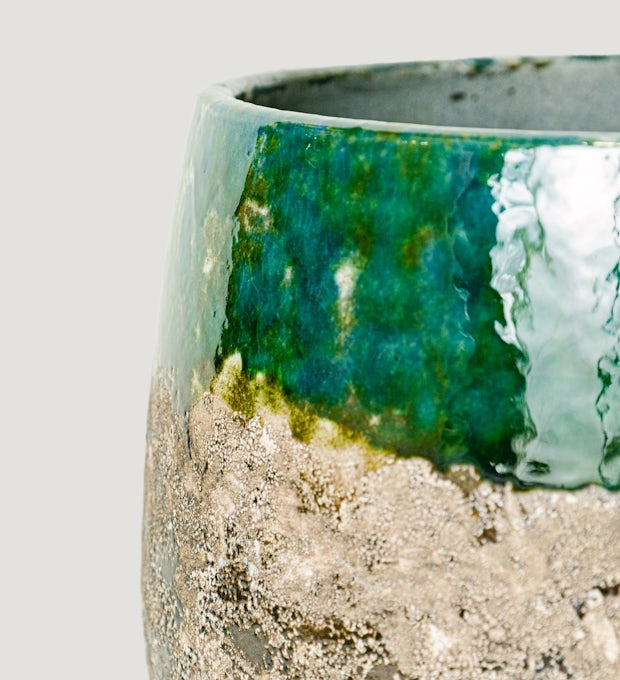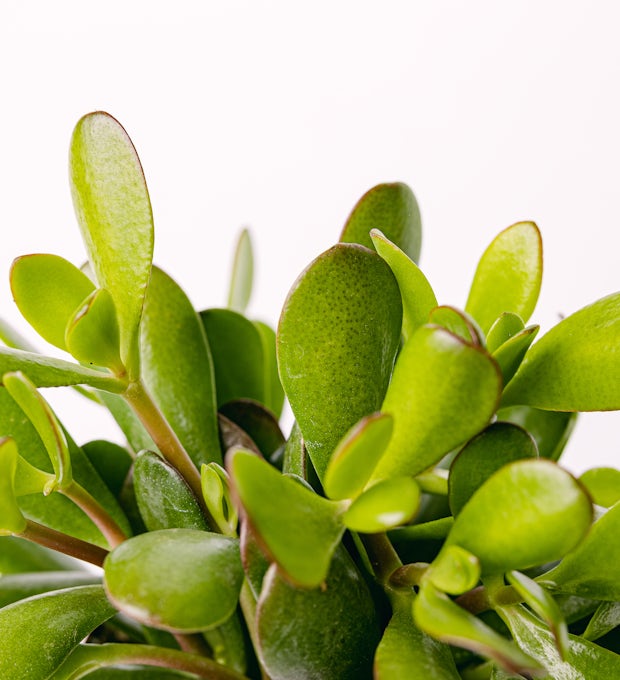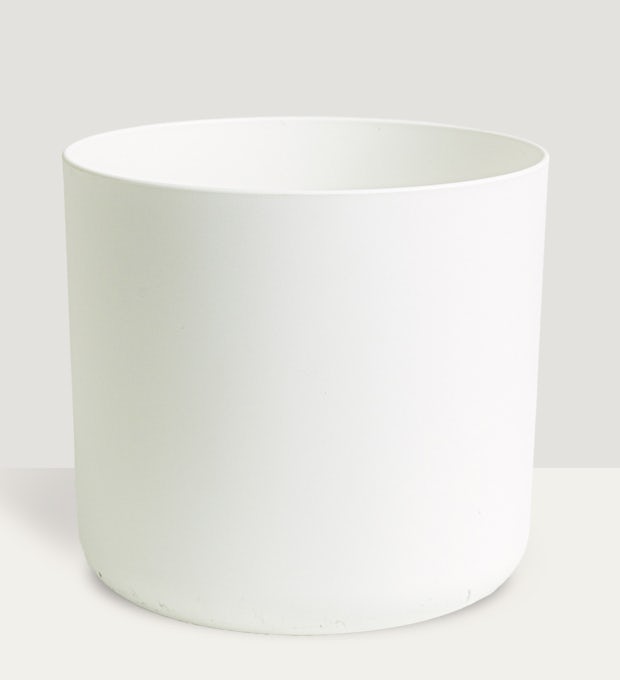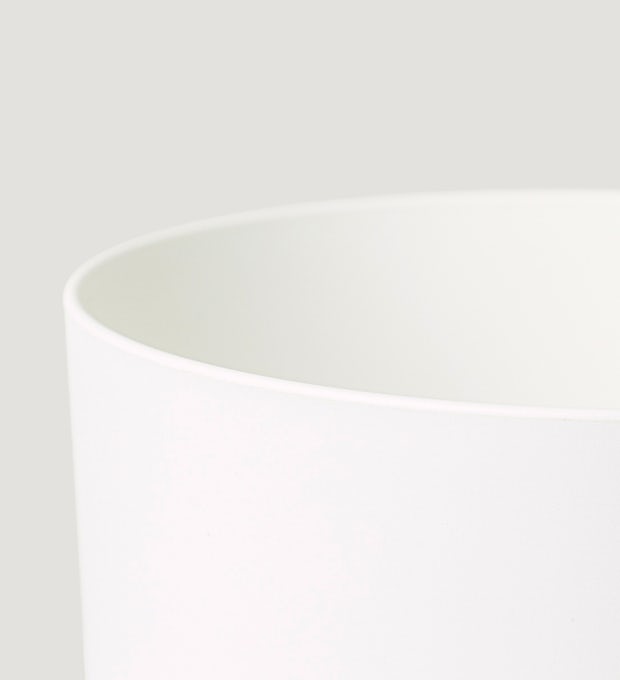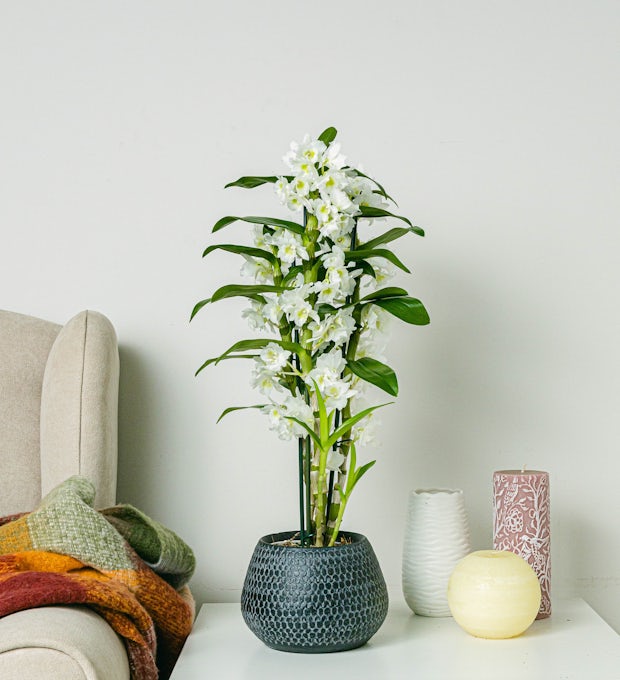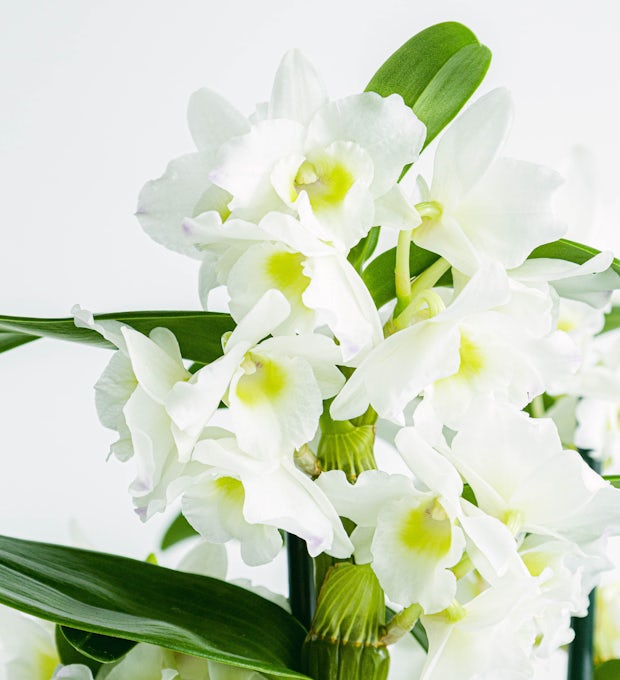In the fascinating world of plants, there is an amazing phenomenon: their ability to survive and thrive in dimly lit locations. In this article, we'll explore how plants adapt to a lack of light and discover which species are ideal for low-light environments. In addition, we will provide useful tips for caring for your plants in poorly lit spaces and explore the possibility of using artificial lighting as a solution. We'll also talk about how plants can be decorative elements in dark interiors and the benefits they bring to our mental health. Get ready to step into an oasis of greenery in the dark!
The Role of Light in Plant Growth
Light plays a critical role in plant growth. Through the process of photosynthesis, plants convert light energy into chemical energy to feed and grow. Sunlight provides the necessary amount of energy for this vital process. Plants use red and blue light for photosynthesis, while green light is less absorbed by them and is reflected, which explains the characteristic green color of leaves. In addition to providing energy, light also regulates other processes in plants, such as seed germination, opening and closing of stomata, and flowering. The intensity and duration of the light are also important factors. Plants need an adequate amount of light to develop properly. If they receive too little light, they can become faint and elongated in search of more light, which is known as etiolation. On the other hand, if they receive too much light, they can suffer damage from sunburn or dehydration. Therefore, it is essential to find the right balance of light to promote healthy growth in plants.
Plant Adaptations to Lack of Light
Plants have evolved various adaptations to survive in low-light environments. One of the most common strategies is stem elongation, which allows the leaves to sit closer to the light source. Another adaptation is the enlargement of the leaf area, which increases the surface area for light collection. In addition, some plants have developed thinner, more flexible leaves to maximize the amount of light they can absorb. These leaves also tend to have less chlorophyll, which reduces the amount of energy needed to maintain them and allows the plant to use it for other metabolic processes. Other plants have evolved to have thicker, waxier leaves, which reduces water loss and allows them to survive in drier, shadier environments. Finally, some plants have developed a funnel-shaped leaf structure, which helps concentrate light in the center of the plant. In general, these adaptations allow plants to survive and thrive in low-light environments, although they often require more time to grow and produce flowers or fruit. It's important to consider these adaptations when choosing plants for poorly lit spaces, as some species may be more suitable than others depending on environmental conditions.
We ship plants to all locations, you can see more options here.
Plants That Prefer Low-Light Environments
Some plants prefer low-light environments and have adapted to survive in these conditions. One of these plants is Sansevieria, also known as mother-in-law's tongue, which is a popular houseplant due to its ability to thrive in low-light conditions and be drought resistant. Another plant that can grow in low-light environments is the Boston fern, which can survive in shady and humid areas. Potos is another popular plant that prefers low-light environments and can grow well in dark interiors. ZZ plants are hardy and can thrive even in environments with little natural light. These plants have thick, glossy leaves that allow them to store water during periods of drought, making them great choices for homes with poor natural light. It's important to note that although these plants can survive in low light, they still need some light to grow and stay healthy. If they don't get enough natural light, you may need to supplement them with artificial lighting or move them to a more suitable location. Overall, if you're looking to add some greenery to your home but have a space with little natural lighting, these plants are great options to start your indoor garden.
We ship plants to all locations, you can see more options here.
Tips for Caring for Your Plants in Dimly Lit Spaces
Plants are living things that need light to survive and grow, but there are some species that are better suited to poorly lit environments. If you have plants in spaces with little natural light, it's important to keep in mind some tips to take care of them properly. First, you should choose plants that are adapted to these conditions, such as ferns, sansevieria, or English ivy. Additionally, it is important not to overwater the plants, as a lack of light can hinder water absorption and increase the risk of root rot. It is advisable to use pots with drainage holes to prevent water stagnation. Another recommendation is to use specific fertilizers for indoor plants and apply them sparingly to avoid leaf burn. It's also important to regularly wipe plant leaves with a damp cloth to remove accumulated dust that can hinder light absorption. Finally, if it is not possible to provide enough natural light to the plants, artificial lighting can be opted for. It is advisable to use special LED lights for plants and adjust the ignition time according to the needs of each species. By following these tips, you can take care of your plants in poorly lit spaces and enjoy their beauty and health benefits without worries.
Artificial Lighting: A Solution for Your Plants?
Artificial lighting can be a solution for plants that are in spaces with little natural light. Lack of sunlight can limit the growth and development of plants, but with the help of artificial lights, it is possible to provide the necessary amount of light for their survival. LED lights are a popular choice as they are energy efficient and emit a wide range of light spectrums that can be beneficial for plant growth. It is important to choose lights that emit white or blue light to promote vegetative growth, and red or orange lights to encourage flowering and fruiting. It's also critical to consider the intensity and duration of lighting, as each plant species has different requirements. In addition, it is advisable to place the lights at an appropriate distance from the plants to avoid heat damage. However, while artificial lighting can be useful, it should not be considered as a permanent substitute for natural light. Plants still need regular periods of darkness to carry out important biological processes such as photosynthesis and rest. Therefore, it is necessary to find a balance between artificial lighting and natural light to ensure healthy plant growth.
Plants as Decorative Elements in Dark Interiors
Plants as Decorative Elements in Dark Interiors:
In dark interiors, plants can be a great option for adding life and color to a space. Although many plants require an adequate amount of light to grow and thrive, there are varieties that are well suited to poorly lit environments. These plants typically have larger, darker-hued leaves, allowing them to capture available light more efficiently. Some popular choices include Sansevieria, also known as mother-in-law's tongue, which is hardy and can survive in low light; the Boston fern, which adds a touch of freshness with its leafy green leaves; and pothos, a climbing plant that can add a touch of elegance by hanging in pots.
In addition to their ability to adapt to dark spaces, these plants also offer aesthetic benefits. Their presence can help soften the harsh lines of dark interiors and add a sense of freshness and vibrancy. In addition, as they are living elements, they can bring a sense of connection with nature to enclosed spaces. When selecting plants for dark interiors, it's important to consider the size and shape of the leaves, as well as their tolerance to lack of light. It's also critical to make sure you provide them with the necessary care, such as watering them properly and keeping them pest-free.
In short, plants can play an important role as decorative elements in dark interiors. Not only do they add color and life to these spaces, but they also provide a sense of connection to nature and can help soften the harsh lines of the surroundings. When choosing plants for dark interiors, it is essential to consider their adaptability to a lack of light and provide them with the necessary care to ensure their growth and prosperity.
Mental Health benefits of having plants in Dimly Lit Spaces
Having plants in dimly lit spaces is not only beneficial for plants, but it can also have a positive impact on our mental health. Studies have shown that having plants indoors can reduce stress and anxiety, increase concentration, and improve mood. Plants can help us feel more relaxed and calm, which in turn can improve sleep quality. Additionally, caring for plants can be a therapeutic and rewarding activity, which can increase feelings of well-being and personal satisfaction. Even simply looking at plants and their growth can be a form of visual meditation, which can help reduce anxiety and improve attention. In short, having plants in dimly lit spaces is not only a form of decoration, but it can also be a valuable tool for improving our mental health.
In this article, we've explored how plants can survive and thrive in places with poor lighting. We've learned about the critical role of light in plant growth and the adaptations they've developed to cope with the lack of light. We've also found out which plants prefer low-light environments and how to care for them properly. In addition, we have considered the option of using artificial lighting to help our plants in dark spaces. On the other hand, we have reflected on the aesthetic impact that plants can have as decorative elements in dark interiors. Finally, we've highlighted the mental health benefits of having plants in dimly lit spaces. However, there is still a lot of research and discovery to be done on how plants adapt to these extreme conditions and how we can maximize their growth in places with poor lighting
